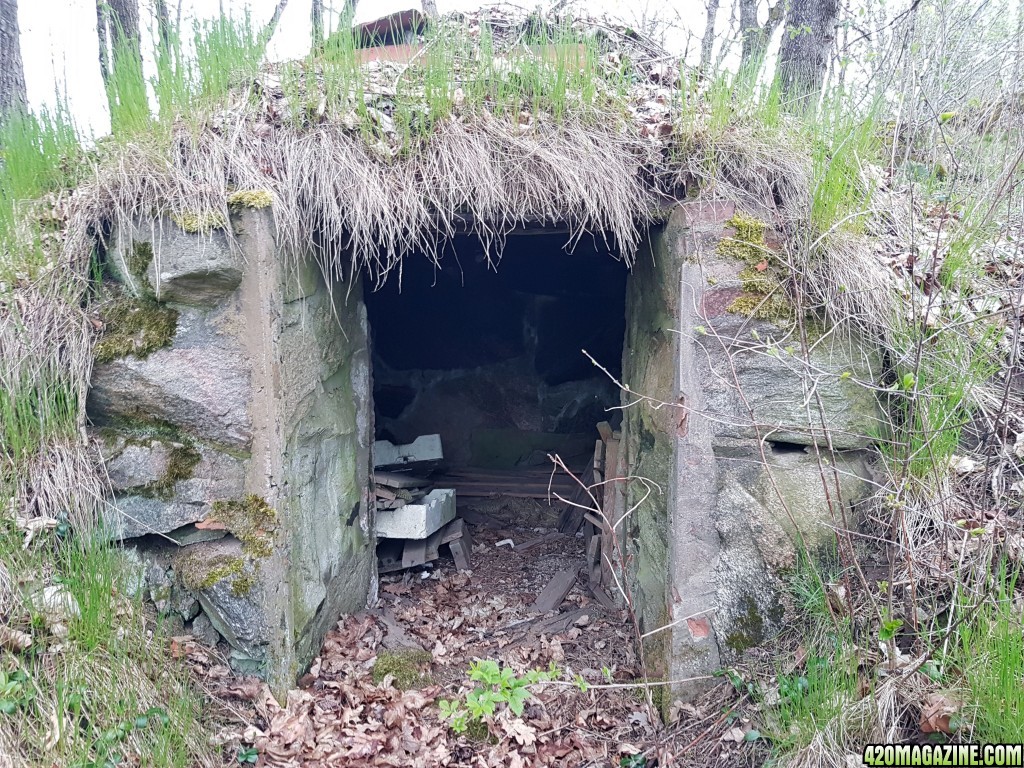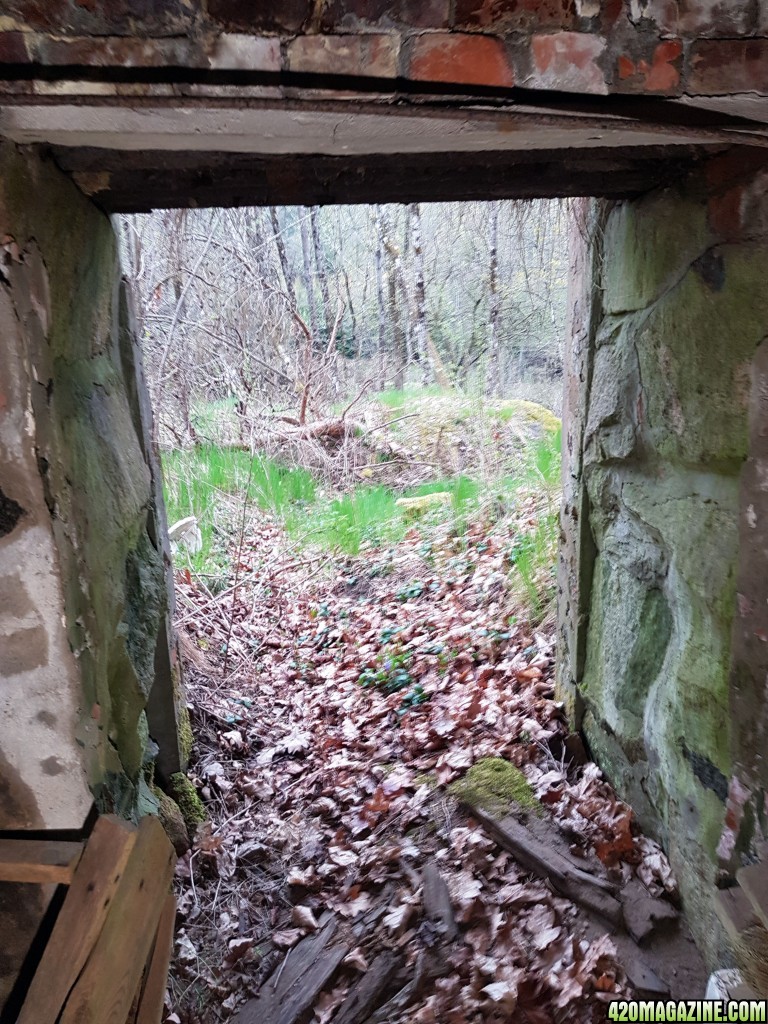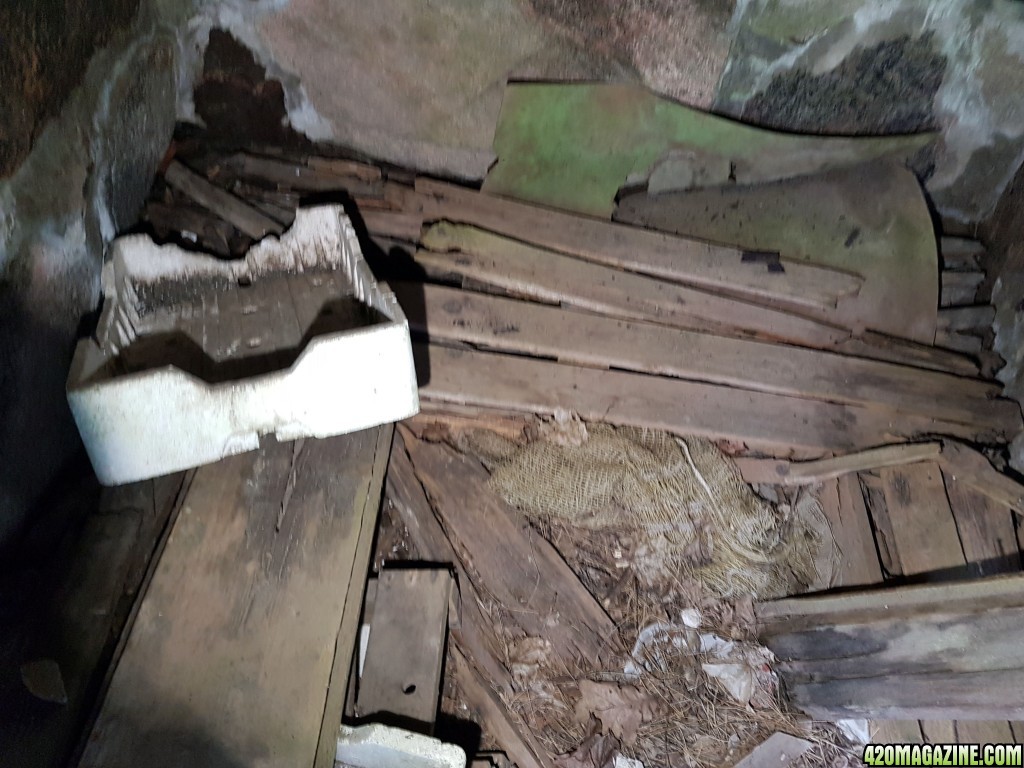Since beginning this thread we've had a member show up who'd spent the years since 1993 refining this very process. He's already worked out what we were trying to discover - the most favorable atmospheric conditions, how to adjust humidity levels when it's time to jar it up, and for that matter, how much time it really takes to get dry enough to begin that step. He's also worked out schedules for burping to maximize the effectiveness of the cure.
You're more than welcome to wander through our early explorations. We had great fun and worked out some neat ideas, including some interesting ways to make shelving, and learning to accelerate the drying with paper bags. But no one will be upset if you choose to jump right to the good stuff. You can always backtrack to find out what other delights we discovered.
The Good Stuff
This was my first recollection of this marvelous procedure we've fondly taken to referring to as "Low and Slow" drying. I can't believe we took so long to play around with it but OMG!!!! Once you've tried this unconventional technique dreamed up by our own mad scientist cultivator and canna chef extraordinare, DrZiggy, you won't look back.
The chief benefit of Low and Slow drying is the ability to retain almost all of the terpenes and flavonoids. When we hang to dry these volitile molecules float away with the air. They weigh next to nothing, so evaporation is swift. In the first week alone you'll lose over 30% of the monoterpenes you had at harvest. Those monoterpenes include myrcene, the terpene that helps the cannabinoids get a fast track through the Blood-Brain Barrier so they can attach to the CB1 receptors and introduce euphoria. I don't know about you, but this is a feature I want to support, as well as all the functions of all the other terpenes that get protected by drying low and slow.
Cannabinoids are are akin to the wheels on a car, and the terpenes the steering column. It'd be nice to be able to steer all that raw power, don't you think?
It turns out that all those wonderful things cannabinoids do for our bodies are determined by the presence of the terpenes. We're not sure yet of the importance of the flavonoids, but you can be certain once they start studying the plant the way it should be, they'll find a good reason to retain them, and you'll already be ahead of the game. This, ladies and gentlemen, is way out on the edge. I'd venture to say we may be the only crazy band out there experimenting with it.
This, ladies and gentlemen, is way out on the edge. I'd venture to say we may be the only crazy band out there experimenting with it.
And I want us to experiment. We're already discovering that it's not as simple as "put them in the fridge and let them dry." There are challenges we're working through, but the discussions are going on in journals scattered about. If we put our heads together and share our ideas we can nail this down and start seeing consistent results that everyone's happy with.
So what do you say? Are you with me? Can you bring yourself to "risk" part of your next harvest to get the best buds you ever smoked? Alright then, let's get to work. Share everything. Be long winded. Working across a virtual field has challenges, but we're adept at overcoming those limitations. I'm excited about what we're about to learn. When I consider the value of this drying technique for oil production I get shivers of joy. I can't wait to make my first batch of oil from buds dried low and slow. If the fresh harvest infused oil is any indication we're in for a treat.
I can't wait to make my first batch of oil from buds dried low and slow. If the fresh harvest infused oil is any indication we're in for a treat.
Having buds tested and contrasted would be a great benefit to this project. It's already started with Canyon, and I'm anticipating others. Anyone volunteering gets the heartfelt "Thanks" from the whole membership.
We can change the way people dry, but that's not my driving motivation. Better buds make better oils, and better oils help my patients and my friends here at find more relief from the gift of cannabis. If we can put so much of ourselves into growing our plants can we do any less than our best to potentiate the harvests?
find more relief from the gift of cannabis. If we can put so much of ourselves into growing our plants can we do any less than our best to potentiate the harvests?
Ready to have fun?

You're more than welcome to wander through our early explorations. We had great fun and worked out some neat ideas, including some interesting ways to make shelving, and learning to accelerate the drying with paper bags. But no one will be upset if you choose to jump right to the good stuff. You can always backtrack to find out what other delights we discovered.

The Good Stuff
This was my first recollection of this marvelous procedure we've fondly taken to referring to as "Low and Slow" drying. I can't believe we took so long to play around with it but OMG!!!! Once you've tried this unconventional technique dreamed up by our own mad scientist cultivator and canna chef extraordinare, DrZiggy, you won't look back.
The chief benefit of Low and Slow drying is the ability to retain almost all of the terpenes and flavonoids. When we hang to dry these volitile molecules float away with the air. They weigh next to nothing, so evaporation is swift. In the first week alone you'll lose over 30% of the monoterpenes you had at harvest. Those monoterpenes include myrcene, the terpene that helps the cannabinoids get a fast track through the Blood-Brain Barrier so they can attach to the CB1 receptors and introduce euphoria. I don't know about you, but this is a feature I want to support, as well as all the functions of all the other terpenes that get protected by drying low and slow.
Cannabinoids are are akin to the wheels on a car, and the terpenes the steering column. It'd be nice to be able to steer all that raw power, don't you think?

It turns out that all those wonderful things cannabinoids do for our bodies are determined by the presence of the terpenes. We're not sure yet of the importance of the flavonoids, but you can be certain once they start studying the plant the way it should be, they'll find a good reason to retain them, and you'll already be ahead of the game.
 This, ladies and gentlemen, is way out on the edge. I'd venture to say we may be the only crazy band out there experimenting with it.
This, ladies and gentlemen, is way out on the edge. I'd venture to say we may be the only crazy band out there experimenting with it.And I want us to experiment. We're already discovering that it's not as simple as "put them in the fridge and let them dry." There are challenges we're working through, but the discussions are going on in journals scattered about. If we put our heads together and share our ideas we can nail this down and start seeing consistent results that everyone's happy with.
So what do you say? Are you with me? Can you bring yourself to "risk" part of your next harvest to get the best buds you ever smoked? Alright then, let's get to work. Share everything. Be long winded. Working across a virtual field has challenges, but we're adept at overcoming those limitations. I'm excited about what we're about to learn. When I consider the value of this drying technique for oil production I get shivers of joy.
 I can't wait to make my first batch of oil from buds dried low and slow. If the fresh harvest infused oil is any indication we're in for a treat.
I can't wait to make my first batch of oil from buds dried low and slow. If the fresh harvest infused oil is any indication we're in for a treat.Having buds tested and contrasted would be a great benefit to this project. It's already started with Canyon, and I'm anticipating others. Anyone volunteering gets the heartfelt "Thanks" from the whole membership.
We can change the way people dry, but that's not my driving motivation. Better buds make better oils, and better oils help my patients and my friends here at
 find more relief from the gift of cannabis. If we can put so much of ourselves into growing our plants can we do any less than our best to potentiate the harvests?
find more relief from the gift of cannabis. If we can put so much of ourselves into growing our plants can we do any less than our best to potentiate the harvests?Ready to have fun?





 )
) This would be a good time for me to switch my Dark Devil Auto into bags. The bag in there is nice and dry.
This would be a good time for me to switch my Dark Devil Auto into bags. The bag in there is nice and dry.



